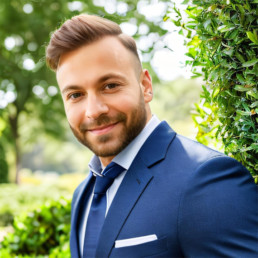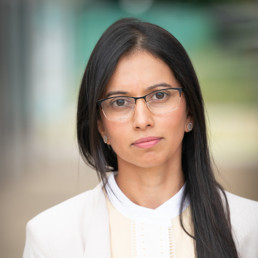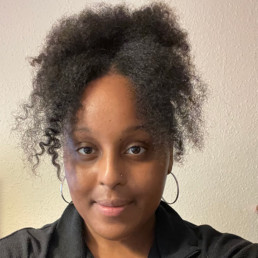A Groundbreaking Milestone: the UK’s First Nursery to Implement Equal Parental Leave

Written by Claudio Sisera
Claudio Sisera is the Founder and Head of Diversity at Male Childcare & Teaching Jobs. Advocate of Gender Inclusivity in Education.
Eagley School House Nurseries has opened a new chapter for equality in early years education by introducing equal parental leave, a policy that’s the first of its kind in the UK’s early years domain. Spearheaded by Director Julie Robinson, this innovative approach goes beyond mere policy changes; it marks a meaningful step toward true gender equality at work and home. Julie’s leadership aims to inspire other settings in the sector to consider similar policies, sparking a ripple effect in early years education.
Driving Equality: The Vision Behind Equal Parental Leave
Julie Robinson’s initiative to implement equal parental leave at Eagley School House Nurseries reflects her commitment to fostering gender equality in the workplace and in family life. “We’ve long assumed that childcare leave is just the mother’s responsibility,” she says, explaining how her policy addresses the need for change. This fresh approach allows parents, regardless of gender, to share childcare responsibilities without stigma.
Research supports the positive impact of both parents being involved in their child’s early years, showing benefits in cognitive and emotional development. By enabling fathers to participate more in these foundational years, Eagley School House Nurseries highlights the importance of both parents’ roles in childcare, setting a powerful example that values fathers just as much as mothers.
Reflecting Core Values: Inclusivity at Eagley School House Nurseries
For years, Eagley School House Nurseries has been committed to building an inclusive environment, and the new equal parental leave policy is a natural extension of that mission. Julie’s work over two decades has consistently championed gender diversity, with projects focused on supporting boys’ achievements and welcoming men into early years roles. “Inclusivity has been my ethos from the start,” Julie explains, emphasising how valuable male contributions are to early education.
This policy not only aligns with Eagley School House Nurseries’ mission but also strengthens their dedication to providing a workplace that challenges stereotypes. By promoting equal leave, Julie fosters a culture where everyone’s contributions are recognised and valued, irrespective of gender. Her work is a beacon for other nurseries and settings, offering a roadmap toward a more balanced childcare sector.
Impact on Staff and the Early Years Sector
The introduction of equal parental leave at Eagley School House Nurseries is not only a supportive measure for its employees but also a landmark decision for the wider sector. As Julie shares, “Parents shouldn’t have to choose between career and family.” Her policy champions choice, removing societal pressure and ensuring all parents feel supported in balancing work and family.
More broadly, this policy fosters a more equitable early years environment. By making parental roles independent of gender expectations, Eagley School House Nurseries encourages fathers to take on active caregiving roles. Julie explains, “Normalising parental leave for all genders helps break down stereotypes about caregiving.” This forward-thinking approach sets an important precedent and signals a progressive shift within early years education.
Transforming Workplace Culture
Eagley School House Nurseries’ equal parental leave policy is expected to bring positive cultural changes to the workplace, creating a supportive environment for all staff. Julie hopes the policy will strengthen job satisfaction and encourage retention, especially for men entering early years education who may seek balance between family and career. “When we value our dads, we acknowledge the important role they play,” she notes.
This commitment to inclusivity could help attract new talent, reinforcing Julie’s message that every role in childcare is meaningful. Her vision reflects a dedication to creating a workplace where employees feel valued as both caregivers and professionals, inspiring other nurseries to consider similar steps.
A Vision for Change: Julie Robinson on the Importance of Men in Childcare
Julie Robinson’s passion for equality extends beyond policy – it’s about reshaping perceptions in the early years sector. She believes that valuing men in childcare is essential for building a truly inclusive society. “When we respect people for what they do, we elevate the industry and the role itself,” Julie shares.
By supporting men’s involvement in early years, Julie hopes to set a new standard that encourages more men to embrace active parenting. She believes that equal parental leave could inspire men to engage fully in their children’s lives and become role models within early years education.
Looking Ahead
Eagley School House Nurseries’ new policy on equal parental leave sets an important standard for inclusivity in early years education. Julie’s commitment to supporting both mothers and fathers equally not only enhances workplace culture but also encourages a balanced approach to family and professional life. This is a significant shift, one with the potential to inspire change across the sector.
We hope that other early years settings will follow Julie’s example, working toward an industry where staff feel valued and empowered to balance work with family. Together, we can create a stronger, more inclusive future for early years education.
Challenging Hair Discrimination Through Racial Narratives, Industry Knowledge on the Economics of Hair and Counter Literacy Equality, Diversity Strategies

Written by Dr Pamela Odih
Pamela is a senior lecturer in Sociology within the Sociology department at Goldsmiths University of London. Her research specialises human rights communication and the significance of me/space to the regulation of subjects and construction of gendered subjectivity with specific regards to organisational analysis and educational policy.
On 27th October 2022 the Equality and Human Rights Commission (EHRC) published new guidance aimed at ensuring that: “Pupils should not be stopped from wearing their hair in natural Afro styles at school” (EHRC 2022). The guidance is supported by resources that are “endorsed by World Afro Day and the All-Party Parliamentary Group for Race Equality in Education” and are designed to assist school leaders in ensuring that “hair or hairstyle policies are not unlawfully discriminatory” (ibid.).
In October 2024, having successfully applied for a British Academy and Leverhulme Trust small grant, I began my empirical study which is entitled “Challenging Hair Discrimination Through Racial Narratives, Industry Knowledge on the Economics of Hair and Counter Literacy Equality, Diversity Strategies”. Research Focus: The proposed research is partly an impact analysis of the application of EHRC resources, into school policies and the responses of school leaders to the suitability and adaptability of these policies.
An additional focus of the study is to envisage the scope and form of guidance on anti-race-based hair discrimination that informs young people as consumer citizens in respect to their cultural heritage of hair sculpture as an expression of racial belonging. I am currently interviewing UK and USA NGOs, charities and human rights legal practitioners to ascertain the impact of their activism in respect to PSHE and citizenship studies educational policy and race equality legislation.
If you have such involvement in this subject area, I would greatly appreciate interviewing you. Please, in this regard, contact me at Goldsmiths University, where I am a Sociology Senior Lecturer. The outcome of the research is scheduled to be disseminated in academic journals and the creation of an open access teaching resource to support consumer citizenship secondary school lessons.
I am also collaborating with the spoken poet Rider Shafique to create three long-form poems for presentation at scheduled multiculturalism festivals within the academy; we also envisage co-creating and illustrating a series of children’s books. I’ll post again as the research progresses and shall provide some interim findings which I hope will be useful for your respective projects.
KCSIE 2024: Safeguarding LGBT students

Written by Lilly Emma Thynne
Lilly Emma (she/her) is a postgraduate student at Lancaster University (2024-25). Previously, as a teacher in state and private secondary schools, she has held additional pastoral and pedagogical responsibilities as Deputy Designated Safeguarding Lead, Resident Tutor (boarding), and Lead for Technology in Teaching and Learning.
Keeping Children Safe in Education (KCSIE) has significantly changed the guidance for safeguarding LGBT+ students. These changes remain under review, pending the publication of guidance for supporting ‘gender questioning children’. To avoid confusion, these changes can be considered alongside other sections of KCSIE (statutory guidance), legislation, and non-statutory guidance.
When writing policies, clarity of language is important. KCSIE states, “All staff should be aware that terminology is a significant component in many safeguarding and wellbeing issues” [s22, p11]. For the purposes of this post:
- Transgender children are children whose gender identity does not match that assigned at birth.
- Gender-questioning children are children who are questioning whether their gender identity matches that assigned at birth.
- Trans+ refers to transgender and gender-questioning people.
- Child/children refers to anyone 17 years or younger.
- Young person refers to anyone 18 years or older.
This post identifies four changes which can be better understood by considering pre-existing legislation and guidance:
1.Removing reference to “trans” students
KCSIE removes reference to “trans” students, replacing it with “gender questioning”.
The Equality Act 2010 and Schools (2014) guidance identifies that the protected characteristic of “Gender Reassignment” applies to students [page 5]. For example, “failing to protect a transgender pupil against bullying by classmates” may make the school guilty of unlawful discrimination [page 8]. The use of the word ‘transgender’ shows the need for schools to maintain reference to pupils who are actively undergoing gender reassignment in addition to those students who are ‘gender questioning’.
KCSIE (2024) maintains the use of the phrase “transphobic bullying” [s91, p28], which refers to bullying directed at a child for either being or being perceived as trans+. The use of this phrase shows that the DfE has not completely ended the use of the word ‘transgender’.
KCSIE (2024) defines ‘safeguarding’ as, among other things, “preventing the impairment of children’s mental and physical health or development”. By removing reference to ‘transgender students’ and replacing this with exclusive reference to ‘gender questioning students’, students who are confident in their gender identity may interpret this as delegitimisation of their identity, leading to further marginalisation. Research suggests trans+ students who feel rejected by their school community are at greater risk of isolation and poor mental health due to internalised transphobia (Horton, 2023; Chodzen et al., 2019).
The Gender Recognition Act (2004) allows anyone aged 18 or older who has lived in their affirmed gender for at least 2 years with a diagnosis of gender dysphoria to change their gender legally. Any young person granted a Gender Recognition Certificate (GRC) should have their legal sex changed on school records, and a school should not disclose the student’s former gender. Reference to ‘transgender’ students may be required in a policy to explain this process.
2. Advocating caution towards social transition
KCSIE now references that the Cass review identified, “caution is necessary for children questioning their gender as there remain many unknowns about the impact of social transition” [s206, p55].
The Cass Review (2024, p.164) recommends, “A more cautious approach needs to be taken for children than adolescents”. For adolescents, the review explains, “exploration is a normal process,” and school staff should provide support to protect the student from bullying. Cass says that children who are not yet adolescents must also have their voices heard. If a child pursues social transition, professionals should ensure the child knows all options remain open and that they will be flexibly supported.
The Equality Act 2010 and Schools (2014) states, “Schools need to make sure all gender variant pupils, or the children of transgender parents, are not singled out for different and less favourable treatment from that given to other pupils” [p.17]. For example, a school may need to consider flexibility when applying a uniform policy to a trans+ student [p15].
KCSIE (2024) reminds us that “Under the Human Rights Act, it is unlawful for schools and colleges to act in a way that is incompatible with the convention” [s82, p26].
3. Removal of the requirement for a ‘safe space’
In 2023, KCSIE required schools to “provide a safe space” for LGBT students to share concerns with a trusted adult. In 2024, KCSIE removed “safe space” and replaced it with a more general requirement to “create a culture”.
KCSIE 2024 states that schools and colleges should, where needed, provide a “physical space” for students who are victims of abuse. While not all LGBT+ students are victims of abuse, a report (JustLikeUs, 2021) found that:
- LGBT+ students are twice as likely as their peers to experience child-on-child abuse.
- 1 in 5 LGBT+ students hear negative language daily about LGBT+ people.
- LGBT+ students are x3 more likely to be bullied at least once a week.
- Only 21% of LGBT+ students who were bullied told a teacher.
For this reason, an allocated safe space for LGBT+ students where they can easily find trusted adults may be instrumental in safeguarding these students.
4. Removal of reference to LGBT+ inclusion in PSHE
KCSIE has removed a paragraph reiterating the need to include LGBT content in the RSE curriculum.
Relationships and Sex Education and Health Education statutory guidance (2021) remains unchanged. When age-appropriate, schools must “ensure [LGBT] content is fully integrated” into the RSE curriculum. This content should not be stand-alone. The guidance defines LGBT as “Lesbian, Gay, Bisexual and Transgender”.
Summary
As safeguarding teams enter the new academic year and continue to support trans+ students, consideration of pre-existing legislation and guidance is important to better understand these changes to KCSIE, which remain under review.
References
Guidance and Legislation
The Equality Act 2010 and schools (2014) https://assets.publishing.service.gov.uk/media/5a7e3237ed915d74e33f0ac9/Equality_Act_Advice_Final.pdf
Gender Recognition Act (2004) https://www.legislation.gov.uk/ukpga/2004/7/contents
Relationships Education, Relationships and Sex Education (RSE) and Health Education (2021) https://assets.publishing.service.gov.uk/media/62cea352e90e071e789ea9bf/Relationships_Education_RSE_and_Health_Education.pdf
Keeping Children Safe in Education (2024) https://assets.publishing.service.gov.uk/media/66d7301b9084b18b95709f75/Keeping_children_safe_in_education_2024.pdf
The Human Rights Act (1998) https://www.legislation.gov.uk/ukpga/1998/42/contents
Research
Horton, C. (2023) Gender minority stress in education: Protecting trans children’s mental health in UK schools, https://www.tandfonline.com/doi/epdf/10.1080/26895269.2022.2081645?needAccess=true
Chodzen, G., Hidalgo, M., Chen, D., Garofalo, R. (2019) Minority Stress Factors Associated with Depression and Anxiety Among Transgender and Gender Non-Conforming Youth, https://www.jahonline.org/article/S1054-139X(18)30295-7/abstract
Cass, H. (2024) Independent review of gender identity services for children and young people https://cass.independent-review.uk/home/publications/final-report/
Just Like Us (2021) ’Growing up LGBT+’ https://www.justlikeus.org/wp-content/uploads/2021/11/Just-Like-Us-2021-report-Growing-Up-LGBT.pdf
Using stories and voices to combat the narrative of antisemitic hate: opportunities afforded by the Curriculum for Wales.

Written by Jennifer Harding-Richards
Jennifer is currently on secondment working as RVE and RSE adviser to schools across three local authorities as well as RVE adviser to the SACRE’s in each of the three authorities. She is passionate about education and especially keen on ensuring that social justice and equity are at the heart of all RVE and RSE curriculum planning, development and pedagogy within the Curriculum for Wales. She is the RE Hubs lead for Wales and a member of the steering committee for the Welsh Jewish Heritage Centre. She has previously worked as a freelance educator for the Holocaust Education Trust and has an MA in World Religions.
According to a recent report (ref 1), there were three times the numbers of antisemitic incidents reported across Wales in 2023, compared with 2022. The incidents which included threats, abusive behaviour and assault, represent a rise of 338%.
Wales is the first, and so far, the only home nation to have made the teaching of Black, Asian and Minority Ethnic histories a mandatory element of their curriculum and are committed to being an anti-racist nation by 2030. The anti-racist action plan (ref 2) includes the vision, values, purpose and strategies needed to support this and understandably, education has a large role to play.
The Curriculum for Wales, introduced in 2022, empowers individual schools to craft and cultivate their own unique curriculum. The aim of each school’s curriculum is to nurture students who are:
- ambitious, capable learners, ready to learn throughout their lives
- enterprising, creative contributors, ready to play a full part in life and work
- ethical, informed citizens of Wales and the world
- healthy, confident individuals, ready to lead fulfilling lives as valued members of society.
As we work towards an anti-racist nation, we are reminded about the power of education. Nelson Mandela’s infamous quote ‘education is the most powerful weapon with which you can change the world’ really resonates with the vision that we have in Wales. We know that far-right philosophies and beliefs are infiltrating mainstream culture, and our children are intoxicated with the images, speeches and behaviour of those that preach such ideologies. As educators, we have the responsibility to counteract such narratives and use our privileged position as curriculum designers and teachers to support our learners to become ethical and informed citizens, able to not only take their place within our diverse society, but to contribute and make positive change.
Wales has a rich, diverse and multi-cultural history. We have a rich legacy of inclusive education as well as a welcoming acceptance for the many diverse cultures and followers of faith that have made Wales their home. The story is told of how some of the first Jews in Wales, arriving in Merthyr Tydfil in the eighteenth century, peered through the windows of some local homes, and on seeing a Bible in every one, decided that this was a place where they could stay and be welcomed.
Using Welsh Jewish stories and voices within our school curricula, whilst obviously not eradicating antisemitism in its entirety, will help develop a generation of young people who are able to humanise and personalise others, avoiding stereotypes and challenge the narrative of the media and those with the loudest voices. We want our children to become ethical and informed citizens, capable of independent thought and able to critically engage with the toxicity of hate that surrounds us on a daily basis.
There are so many Welsh Jewish stories that deserve to be told, individuals who have helped shape our society and made a positive impact on others. Leo Abse, for example, a social reformer, and Labour MP for 30 years. He was influential in the shift in laws and norms towards the acceptance of homosexuality and divorce. We want our pupils to engage with discussion around his ideals and values and how they have changed Wales for the better. His aunt, Lily Tobias, had a multilingual childhood in Ystalyfera which fostered in her a political activism, a sense of social justice and a determination to try and change the world. Her legacy cannot ever be underestimated. Kate Bosse Griffiths, escaped Nazi Germany and along with her husband, became a founding member of ‘Cylch Cadwgan’, an organisation that welcomed and celebrated writers, poets and pacifists. Her own writing focused on her feminist ideals and sense of spirituality. She made a huge difference to those around her.
In working towards an anti-racist Wales, in celebrating and recognising cynefin (ref 3) and using our subsidiarity and autonomy to design our own bespoke curriculum for our learners, we have a real opportunity to use stories and voices to challenge stereotypes, antisemitic tropes and narratives of hate.
References
‘We’ve not seen this since the Holocaust’: Antisemitism in Wales up by 300% after outbreak of war:
Anti-racist Wales Action Plan
https://www.gov.wales/anti-racist-wales-action-plan-contents
‘cynefin’
A Welsh word for which there is no direct translation. It refers to the ideas of habitat and a sense of rootedness, It describes the environment in which one is naturally acclimatised.
My Journey as a Part-time Senior Leader

Written by Harroop Sandhu
Harroop Sandhu is a senior school leader and professional coach, with 17 years of experience driving successful strategies and improving outcomes in various educational areas. Most recently she has led her school to successfully achieve the Send Inclusion Award, as well as spear-heading the organisation's DEI strategy. Her approach is to ensure that DEI work is integrated within the strategic aims of the organisation leveraging existing leadership tools.
Three years ago, the notion of transitioning to part-time work was nowhere on my horizon.
Life took an unexpected turn when one of my children fell ill, prompting a pause on my career to refocus on what matters the most. Amid navigating my child’s health needs, I found myself in survival mode. Emerging from this challenging period, I returned to part-time work after a two-month gap, encountering initial hurdles. However, as I gradually found my rhythm, an unforeseen preference for this new way of working emerged.
Within this experience, I’ve uncovered valuable insights.
Myth #1: Working Part-Time Means Less Effectiveness.
Contrary to common belief, working part-time doesn’t hinder efficiency; it can actually enhance it. The gift of more reflective time has nurtured my creativity and innovation.
Success in this arrangement hinges on disciplined time management; I remind myself I’m paid for three days of work, not squeezing five into three.
Liberating myself from guilt and the need to prove myself has been a pivotal realisation.
Tips
- Effective time allocation is key.
- Balancing work, family, commitments, and especially self-care all demand careful planning and allocation. Don’t put yourself last or squeeze it in.
- Silencing self-criticism about perceived weaknesses is part of the journey toward self-compassion.
Myth #2: Part-Time Work Signals Lack of Ambition.
Embracing part-time work has deepened my commitment to personal growth.
While some argue full-time dedication accelerates progress, I’ve found fulfilment in having the mental space for development and time to pursue other interests, aligned with my sense of purpose. I have found that I have more time for coaching and other professional development, which in turn benefits my employer and as well as myself.
This flexibility has also inspired others, resulting in increased requests for flexible arrangements—an indicator of impactful leadership.
Tips
- Celebrate your achievements and acknowledge your aspirations.
- When you silence doubts, your strength and dreams amplify.
- Before constraining yourself, seek input from others to broaden your perspective.
Myth #3: Missing out on Connection and Opportunities.
Initially, the challenge of navigating communication arose from a fear of missing out due to absence. However, I’ve learned that communication quality outweighs quantity.
Utilising strategies like follow-up emails and regular check-ins helps maintain involvement.
Open conversations marked by transparency with superiors foster mutual understanding.
Addressing unique experiences benefits not only you but also those around you.
Tips
- Express your needs openly with your line manager.
- Ensure your scheduled time with your line manager remains intact and isn’t cancelled.
- Propose suggestions and solutions, but don’t shoulder the burden alone.
Myth #4: Flexibility Equates to Unreliability.
Unreliability often arises from overcommitment or lack of planning. Overcoming guilt and the desire to overcompensate, by embracing strategic time management and open communication was enlightening. Prioritisation, clear communication, and collaborative solutions with my line manager helped navigate this. As well as, balancing tasks and seeking help as needed cultivating a win-win situation.
Tips
- Consider what you might need to say no to when saying yes to additional tasks.
- Involve your line manager in this process. It could involve acquiring more resources, creating space, or delegating tasks.
- Don’t hesitate to seek compensation for work beyond your designated hours.
- Effective leaders recognise their boundaries. Don’t be afraid to say no.
I believe that Flexible working is a solution for not only working parents, but for people that are looking to explore personal growth or navigate other areas of life outside of their work. This autonomy can lead to greater job satisfaction and happier employees who are likely to be more creative, innovative and productive.
An Exploration of the Persisting Legacy of Imperial Rhetoric in Modern Education through a Case Study on ‘Eugenics, Race, and Psychiatry in the Cape Colony, 1890-1908: Dr Thomas Duncan Greenlees’

Written by Rosa Legeno-Bell
Rosa is co-founder and Director of Diverse History UK (DHUK); an LGBTQ+ and female-owned business. DHUK provides educational consultancy to address diversification of educational curricula. Rosa has worked in the education sector for over a decade, mainly in inner-city London comprehensives; as a History Teacher, Head of History and Associate Assistant Principal. Rosa graduated with distinction from the University of East Anglia with a Master’s Degree in Modern History.
This blog examines imperial rhetoric around race and eugenics through a case study of colonial psychiatrist Dr Duncan T Greenlees and explores how the legacy of imperialism lives on in the education sector.
Greenlees was the medical superintendent of Grahamstown Asylum in the Cape Colony from 1890–1907, regarded by his peers as an authority on race and eugenics (T. Duncan Greenlees M.D., 1930).
Greenlees’ Theories on the Native Mind
‘[African natives’]… wants are simple and their habits primitive; they are… willing servants, and naturally look up to white people…’ (Greenlees, 1882)
Greenlees maintained that biological and cultural differences between Africans and Europeans explained native mindsets. He attributed native ‘insanity’ to the exposure of ‘savage’ minds to Western civilisation (Swartz, 1995). The myth of primitive natives was key to the justification of British paternalism in the colonies as well as the confinement of natives who refused to conform to their prescribed roles in colonial society (Summers, 2010). In A Statistical Contribution to the Pathology of Insanity (1902), Greenlees declared that:
‘…[if] brought under the artificial influences of civilisation…[the native] …is particularly liable to chest troubles.’
And also claimed:
‘While mania is considered a disease of undeveloped [native] brains, melancholia may be regarded as one of developed [European] brains’
(Greenlees 1902, p. 12).
The falsity that non-whites were incapable of melancholia was supported by later colonial psychiatrists and is still echoed in practice today (Rosenberg, 2019). Greenlees also appealed to the common myth of the unhygienic native, stating they are ‘extremely filthy in habits,’ (Greenlees, 1902. p. 17) a stereotype commonly used to underpin dehumanising imperial rhetoric.
The influence on Greenlees of Victorian hegemony, such as Darwin’s theory of natural selection, is discernible. Darwin’s theory was commonly misapplied by imperialists to claim racial superiority and, under the guise of Social Darwinism, to justify imperial actions (Dafler, 2005). In Insanity Among the Natives of South Africa Greenlees warns:
‘The time will soon come when civilisation will overshadow [native tribes] with its baneful pall, bringing innumerable diseases in its train and ultimately exterminating all races that oppose its progress.’
(Greenlees, 1895, p. 75)
Greenlees’ Principles of Eugenics
‘…how much suffering might be avoided if…men were allowed to exercise the same care in the selection of their mates as they do when breeding their cattle’
(Greenlees, 1892, p. 302).
During the Nineteenth Century, white-working class British people were also dehumanised and infantalised by the British state. The white working classes were integral to imperial rule as they powered the industrial revolution on home soil through cheap labour and terrible working conditions.
Greenlees worked in the Cape Colony after the emancipation of Transatlantic slaves and during the Second Boer War (Facing History and Ourselves, 2018). At this time, it was believed that many South African whites, particularly Afrikaans, were becoming less civilised, mirroring British stereotypes of native peoples (Klausen, 1997). For Greenlees it was paramount that the white race maintained an air of supremacy. (Burdett, 2014), He argued that the breeding of ‘lunatics,’ ‘imbeciles’ and ‘drunks,’ constituted a grave threat to imperial rule (Klausen, 1997).
Greenlees’ also theorised about ‘coloured’ (mixed-raced) people, referring to them as ‘the bastard.’ Highlighting his fears regarding race and degeneracy, he contended:
‘a mixture of white and black blood… seems to present the worst characteristics of both races.’ (Greenlees,1892, p. 71)
Greenlees opined that, mixed-race communities were degenerates and threatened British dominance (Kolsky, 2013), a view mirrored by segregationists in the southern states of America around the same time.
So, Greenlees advocated for people to make genetically ‘wise’ choices over their marriage partners and proclaimed that it is:
‘…absurd… that we should devote more…consideration to the mating of our horses and pigs than we do that of our sons and daughters’ (Greenlees, 1903, p. 11).
The Impact of Colonial Rhetoric around race and class on the Current Education System
‘… decolonising and detoxifying the education regime are a sine qua non for… academics, especially those who are cognisant of the true meaning of education.’
(Nkwazi Nkuzi Mhango, 2018)
Elhinnawy (2022) maintains that a diverse book collection does not suffice and that educators need to honestly explore their own internal prejudices and their origins. While Bentrovato (2018) contends that colonialism is a ‘hallmark of modern world history.’ whose legacies survive because of modern institutions such as education.
But, decolonisation has been controversial. Seemingly concerned, The Department for Education (2022), introduced a guidance on impartiality in schools in 2022 on the back of the growing call to decolonise education.But decolonisation is possible still, as the guidance does not include any additional statutory requirements, and there is still room to decolonise if a range of historical evidence is engaged with and views are not taught as objective fact. The dichotomy between a government and its institutions can cause friction. Leading governmental leadership posts are filled disproportionately by privately educated people (predominantly white and male) who attended Oxbridge colleges. In 2019, 57% of the government’s cabinet and 36% of those who work in the media had attended an Oxbridge university (The Sutton Trust, 2019). Notably, private schools and Oxbridge universities were avid mouthpieces for colonial rhetoric.
Despite the controversy over decolonisation, it is a no-brainer. As diversity increases, decolonisation becomes more urgent –with 43% of young Black people saying that:
‘A lack of curriculum diversity was one of the biggest barriers to…achieving in schools,’(Anna Freud, 2021).
Yet many schools still pursue whitewashed curricula and old-fashioned pedagogies. Critics of decolonisation have argued against it on the basis that we should not eradicate history, but true decolonisation does not entail deleting history, it encourages adding to existing narratives and amplifying historically silenced voices. Another criticism is that decolonisation only considers marginalised black voices, but that is too literal an understanding. Decolonisation believes in amplifying all marginalised voices such as the white working classes who too were downtrodden and exploited for the empire. One compelling reason for decolonisation is that the amplification of many voices and celebration of shared histories may also repair relationships between marginalised communities, too often pitted against each other.
Greenlees provides a significant insight into the ideologies that propped up the British empire, and serve as a shocking reminder of the philosophies on which modern Britain was founded. If educators work together to build a fairer education for our students, then we are playing a part in creating a kinder and more compassionate society for our students and our children.
Read more and find the references here:
Bye bye Birmingham – a personal reflection on EDI work

Written by Gemma Hargraves
Gemma Hargraves is a Deputy Headteacher responsible for Safeguarding, Inclusion and Wellbeing.
After seven years teaching at a wonderful school in Birmingham, I’m moving on. This felt like an opportune moment to reflect on what I’ve learnt from leading on Equality, Diversity and Inclusion in the youngest city in Europe. I was asked to take this on in Spring 2020, (whilst on maternity leave) and I hope I have done the role justice (although I know there is so much more to do). I have also visited dozens of primary schools as part of my responsibility to oversee transition, and whilst my experience has perhaps been limited due to the nature of my school (independent, selective) I have some sense of what makes Birmingham such a fantastic place to teach and learn today.
It has to be acknowledged that EDI work is challenging – it can be incredibly rewarding, frustrating and demanding in equal measure. Conversations about race, gender, sexuality and class are not universally welcomed, and some colleagues are sensitive, defensive or disinterested when inclusive language is discussed. Here I would add a Maya Angelou quote that guides me and helps me appreciates even small gains (because she says it better than I ever could) – Do the best you can until you know better. Then when you know better, do better.
A challenge and opportunity of a Birmingham school, especially a selective one, is the range of family backgrounds. Some have same sex parents, whilst some have strong beliefs that this is not acceptable. Some embrace SEND support, others shun it. Some welcome conversations around identity, others shut this out. As Josiah Isles mentioned in his April blog here – We need to step into the shoes of a Muslim student who attends school five times a week, an Islamic school on Saturdays and their local mosque every evening. This quote is more meaningful to me as Josiah’s school is actually where I went to school 11-16. For me, to see that my old school is undergoing this important work as I myself am reflecting as a senior leader in education means a great deal.
Reading recently The Birmingham Book: lessons in urban leadership and policy from the Trojan Horse Affair really made me appreciate the wider landscape I’d walked in to when I started at a Birmingham school. Initially, I hadn’t fully appreciated the context and impact of all the publicity on schools not far away. The book, edited by Colin Diamond, professor of Education at Birmingham University (just across the road from my school), is a collection of essays from people who “have lived and breathed Birmingham education for many years”. The accounts opened my eyes to a challenging period in recent educational history, but also to positives to have come out of it – relationships between school and communities, a greater understanding of the impact of deprivation and a celebration of the potential of Birmingham. This is reiterated in the aforementioned blog by Isles where he says A school is, after all, the heart of the community. The leadership takeaways at the end of chapters are useful reminders – about values, integrity, culture and understanding community dynamics, I plan to take this forward to my next school. I’ve also discovered some great YA fiction from Birmingham authors such as If Your Read This by Kereen Getten who we are lucky enough to have visiting our school to talk to pupils soon.
Birmingham Commonwealth Games showcased the city and featured volunteers from our staff and student body (and countless other local schools). To see the city receive this positive attention was heart-warming and well deserved. The beauty of the Commonwealth Games coverage was in the showcasing the heritage and identity of modern Birmingham and this is where future EDI work must focus, in any area – an appreciation of the history and heritage but also a celebration of modern identities. As a History teacher, it is also clear that we can critique previously accepted interpretations of the past, and view the past anew through lenses of today. This is how we can promote an authentic sense of belonging.
I am incredibly grateful to have worked at my school, which is playing a leading role within the King Edward VI Foundation in the city. The Foundation values state that The schools … should be rooted in the communities that they serve and be responsive to the nature of those communities. In particular, all of the schools are committed to making themselves as accessible as possible to all pupils, whatever their background or circumstances. I have to believe that this is achievable and that my school, with an excellent and developing Assisted Places programme, will be an appealing option for academically able students from across the region regardless of socioeconomic status. Personally, it may be indulgent but I have to acknowledge here how much I value the incredible pupils I’ve taught along the way; many of whom have driven EDI and helped maintain momentum at times of conflicting priorities. And of course, the staff – those who lead tirelessly, those who teach incredible lessons and support pupils every day, and those who support the workings of a school in subtle but vital ways.
Over the past three years of leading on EDI I’ve realised that we need to shout about the work – raise the profile. Avoiding performative activism on social media, but celebrating progress (whilst acknowledging that the work goes on). I’ve nominated colleagues for Rising Star Awards and National Diversity Awards and have nominated pupils for National Diversity Awards, NASEN Young Advocate of the Year and West Midlands Young Active Citizens Awards. I hope this helps people feel valued but also shows the whole school community that EDI work is valued and recognised. I would encourage more schools to recognise their staff and pupils in this way, alongside small daily acts of gratitude and recognition that mean so much to colleagues and pupils.
We are now three years on from when many schools stumbled or strengthened their EDI efforts following publicity around the Black Lives Matter movement and then Everyone’s Invited. There is more to do but I have faith that the schools of Birmingham, especially the King Edwards Foundation can lead the way.
Addressing the Legacy of Section 28 & Supporting Diverse Families

Written by Troy Jenkinson
Equality, Diversity & Inclusion Specialist, children’s author, public speaker and former Primary Headteacher and Executive Headteacher. https://troyjenkinson.com/
Today, more than ever, we should strive for equality in our schools. Seeing how LGBTQ+ culture has been embraced in colourful Pride events and the peppering of queer characters in the media, you could be forgiven for thinking we had turned a corner in equality. We have come a long way, triumphing over the Section 28 policy (the 1988 amendment to the UK Educational Bill silencing queer teachers) and the partial decriminalisation of homosexuality. We have fought hard for rights to marry, adopt and live our lives showing our “True Colors” to quote Cyndi Lauper.
Digging deeper, you realise how far we still need to go. The ILGA (2020) reports 70 countries still criminalise homosexuality; 6 punishable by death, 57 with lengthy prison sentences. Only 68 countries offer broad protection for their LGBTQ+ population. High profile media events point to continued educational need. Florida’s “Don’t Say Gay” Bill (March 2022) mirror’s Thatcher’s vindictive 1988 Section 28. We have not learned. Cripplingly unfair acts such as harsh laws to imprison LGBTQ+ people for life in Uganda reported by the BBC in March 2023 marginalise our community.
The UK once topped the ILGA table of European countries for LGBTQ rights (2015), but slumped 14 places by 2022, accredited to governmental failures and its abandonment of its promise on gender recognition and equality plans. The statistics speak for themselves. Galop (2021) reported “LGBT+ hate crime is disproportionately on the rise in the UK.” Two thirds of LGBTQ+ people experienced homophobic violence or abuse. This likelihood only increases for ethnic minority and trans people.
The question we have to ask ourselves is; why?
Bullying is borne from ignorance. Section 28 has long-lasting effects on our educational establishments. Stonewall reports LGBTQ+ students are twice as likely to have been bullied than their non-queer compatriots (42% compared to 21%). Teachers echo this; 85% of secondary and 45% of primary staff acknowledge homophobic bullying in their schools.
With less than half of LGBTQ+ students (48%) experiencing positive messaging to support them, it is high time we as educationalists did something about it. The government introduced Relationships and Sex Education Guidance (2019) but left it open to interpretation stating:
“Schools should ensure that all of their teaching is sensitive and age appropriate in approach and content. At the point at which schools consider it appropriate to teach their pupils about LGBT, they should ensure that this content is fully integrated into their programmes of study for this area of the curriculum rather than delivered as a standalone unit or lesson. Schools are free to determine how they do this, and we expect all pupils to have been taught LGBT content at a timely point as part of this area of the curriculum.” (DfE, 2019)
Robert Long (2023), concludes schools are still not required to “promote” same-sex marriage:
“Governors, teachers and non-teaching staff in schools, parents and pupils, are free to hold their own religious or philosophical beliefs about marriage of same sex couples.” (Long, 2023)
Schools need help to sensitively support all pupils and tackle the endemic victimisation. They need to address inequality and inclusion in their curriculum and how they support diverse families. There is little guidance for parents themselves.
From my own experience of coming out, my parents found it traumatic; relating it to grieving as they tackled a myriad of questions, hyped by media negativity:
- Would I grow up happy and fulfilled?
- Would I be bullied?
- Would I die of a terrible disease?
- Would they have grandchildren?
Though this was in the 2000s, it is still a very real issue for some individuals today.
Recently, I worked with international colleges supporting staff and students from countries with poor human rights for LGBTQ+ citizens. I became fascinated by the term “Straight Privilege.” Those not identifying as LGBTQ+ do not have to come out, or seek out role models in the public eye. It is an interesting concept to explore.
As a headteacher, influenced by Andrew Moffatt, I introduced weekly “No Outsiders Assemblies.” Using news images, I positively identified people who stood up for their rights or succeeded despite potential marginalisation. This ranged from Malorie Blackman’s interpretation of historical figure, Rosa Parks for Doctor Who and Jacinda Ardern’s maternity arrangements as New Zealand’s Prime Minister, to discussing the controversies of a gay kiss at the 2018 Winter Olympics.
Working with a family whose children experienced bullying for having same sex parents, inspired me to publish my first children’s book “The Best Mummy Snails in the Whole Wide World.” Since, I have delivered countless assemblies, workshops and key notes speeches aimed at fighting the corner and being the role-model, I never had in school.
Reducing barriers to inclusion by casting a wide net

Written by Mahlon Evans-Sinclair
Mahlon Evans-Sinclair is an experienced educator with extensive participation in the fields of learning, professional & personal development, and EDI (Equity, Diversity and Inclusion).
Recently, I updated some guidance on the ‘use of pronouns’ as part of a wider report writing set of guidelines.
From the outset, I’ll say that I didn’t like the singular focus being placed on pronouns. Given that it’s an agitator for many, it felt like it was getting in the way of a wider message about how to write for a document that’s official in nature, but also personal in content. Additionally, the wording gave off a ‘need to know’ basis about any change/accommodation needed for the child in this regard. The twin issues for me in this are that (1) at a school-wide level, it requires the ‘push for assistance’ button to be pressed before ‘support’ can be given and (2) it can lead to a reactive ‘when prompted to’ attitude from teaching staff, with relation to promoting good practice of inclusion as default across the board.
So I changed the wording from a focus on pronouns to a wider acknowledgement to ‘Inclusive Language’ and in doing so, I added the following points:
- Inclusive language is affirming of all students, regardless of identity marker. (It reduces anxiety and barriers associated with identity presentation and supports feeling respected, understood and represented).
- [With regards to gender] Use of gendered terms are perfectly appropriate in many contexts (such as report writing) and don’t need to be consistently avoided, however consideration to use inclusive terms is encouraged across all interactions with students.
- Where a request has been made by both student and parent/guardian to use only the student’s name or [different] pronoun, [this will be communicated] directly.
In updating the guidance, there were a few things I wanted to contextualise, so separate from the document I gave further framing:
- Firstly, we should be working to reduce any barrier of inclusion related to accessing the feeling of being part of/belonging in a space.
- Thinking about it from the famously used and adapted ‘equality/equity’ image, we should be working to remove the fence completely (inclusion/liberation), rather than suggesting that we will treat everyone equally unless there has been a request made by the person facing the greatest barrier for an equitable ‘accommodation’.
- Furthermore, it’s understood that it’s not the responsibility of the person facing the oppression to educate others about it, so if we were to take that into account in this case, being inclusive in our language from the start takes the burden off of students having to ‘out’ themselves in highly visible and potentially unsafe way to feel validated in their identity.
- Finally, (in this case), moving the conversation away from being specifically on gender and reactive in its nature, we have the opportunity to move it to being about being ‘Intentional, Individual and Inclusive’ that both affirms the purpose of the space as well as those who are part of it.
Hair Equality in UK schools: Why Hair Is More Than “Just Hair”?

Written by Tori Sprott
Tori has a BA in Philosophy and an MA in Policy Studies in Education. She has a particular interest in Sociology of Race and Education and exploring counternarratives from a racial perspective.
Introduction: Equality in Schools
School is a place where young people spend most of their lives. Schools should be safe spaces for young people to learn and develop their values, self-esteem and life skills. It should be a space where equality is championed and held high as a core value, but unfortunately, this isn’t always the case. This blog will focus on a specific type of inequality that Black and mixed-raced people are often faced with in school, hair discrimination, and will provide schools with some tools for navigating this issue.
In this blog, I will introduce the concept of hair discrimination with a brief outlook on Afro hair and its significance. I will also be referring to real examples of young Black and mixed-race people who have been punished by schools for wearing natural hairstyles. In this blog, I will be using the terms ‘natural hair’ and ‘Afro hair’ interchangeably, referring to the natural kinky texture of Black people’s hair. It is worth mentioning here that in acknowledging Afro hair, we must also acknowledge the diversity within this term, as there is no single natural hair texture.
Hair discrimination: a brief history
On the surface, many may assume that hair is just that: hair. Why the big fuss over something so trivial? The history attached to Afro hair is vast but also a huge identity marker for Black and mixed-race people that many aren’t aware or conscious of. Historically, Afro hair has been a symbol of background and status, a site of oppression, something that required alteration, particularly post-transatlantic slave trade, and a symbol of Black power (Jahangir, 2015). This indicates that the perception of Afro hair has changed throughout history – once being seen as beautiful and powerful, then being seen as the opposite during the transatlantic slave trade where many Black people had their hair shaved off. This led to many people with Afro hair (chemically) straightening their hair to avoid the abuse and stigma post-transatlantic slave trade, and also led to a period of time where people with Afro hair reclaimed power and pride over their natural hair as a response to racism and hair discrimination. The impacts of these ever-changing perceptions are wide-spread and still exist in present day.
The impact of the transatlantic slave trade on how society perceives Afro hair is still present today, resulting in Black and mixed-race people feeling as though they need to straighten their hair to “fit in”, with concepts of ‘good’ [looser curls, softer texture] and ‘bad’ [kinkier more dense hair textures] hair formulating ideas about the acceptable appearance of Black people’s hair (Robinson, 2011).
Hair discrimination in schools: UK context
Research from World Afro Day Hair Equality Report (2019) showed that 82.9% of young people had experienced having their hair touched without consent, and 58% experienced being on the receiving end of uncomfortable questions. These are troubling statistics. These occurrences can be offensive because it points out that there is this sense of difference that inclines those without Afro hair to touch it or ask questions that could leave people feeling alienated. If there were more education on Afro hair, perhaps the occurrence of these uncomfortable encounters would reduce, and overall comfortability for those with Afro-textured hair would increase.
I can remember various occasions as a young Black person being told, “you should straighten your hair”, typically by people who did not have Afro-textured hair. This is quite offensive as it suggests that your Afro-textured hair is perhaps incomplete or undone. It is unfortunate that hair discrimination exists, and we see such incidents occurring in UK schools with Black and mixed-race pupils facing exclusions due to culturally dismissive uniform policies.
Ruby Williams is a young person who faced hair discrimination at school in London. She was told that her hair was a distraction and “too big”, and as a result was sent home on multiple occasions, disrupting her learning. She also speaks on the pressures to straighten her hair in her younger years as natural hair was never represented around her. The problems started when she decided to stop straightening her hair, and she was routinely targeted by the uniform policies that the school had in place, which have since been removed. Ruby’s family took legal action against the school, however, it ended with an out of court settlement (Virk, 2020). In March 2021, students at Pimlico Academy staged a walk out due to uniform policies banning hairstyles that “block the view” of other students (BBC, 2021). In this context, students are having to take matters into their own hands in order to be heard, but this commitment to equality needs to be taken further by those who have authority in policy-making processes.
Jewellery Quarter Academy in Birmingham recently adopted the Halo Code – coined by the Halo Collective as a means of committing to hair equality in workplaces and schools (Newsround, 2020) – stating that “all students should be able to come to school being themselves and feel proud of their identity. That is why we are proud to sign up to the Halo Code” (Chamberlain, 2021).
So, where do we go from here? What can schools do to prevent this from occurring in the future?
Recommendations for school policy – how can we tackle hair discrimination in schools?
- Schools must ensure that their uniform policies surrounding hair styling do not have a disproportionate impact on Black children. Avoid exclusions or any kind of behaviour punishments that would further marginalise that child. Thinking about uniform policies, the language used in such policies (for example, ‘professional’ – what is being suggested if Afro hair isn’t deemed professional, and what impact does this have?), why they have been implemented, and whether they can be adapted for inclusivity. Schools can consult with stakeholders in order to better understand the implications of language used within a policy.
- Schools must create an environment of inclusion and commit to embedding understanding of diversity in the school ethos. Understanding how certain language and descriptions about Afro hair can be problematic. Actively challenging stereotypes and assumptions about Afro hair[styles] that reinforce racist ideas about groups of people. Members of staff should be aware of discriminatory language [amongst pupils and staff] regarding Afro hair and ensure that this is not tolerated or acceptable. For example, the idea that Afro hair is ‘messy’ or ‘not done’; the idea that straighter hair is more ‘professional’ than Afro hair; asking a Black or mixed-race student/staff member if their hair is a wig if it is long or straight.
- Make a pledge – As mentioned earlier, The Halo Collective are a group of campaigners who advocate for hair equality in schools and workplaces. Adopting their Black Hair Code shows commitment to rejecting hair discrimination. A number of schools in the UK have adopted this code. Schools can also make their own pledges about how they will tackle the issue of hair discrimination within their setting and embed this in the school rules.
References
BBC (2021) Pimlico Academy pupils stage protest over ‘racist’ uniform policy, BBC, https://www.bbc.co.uk/news/uk-england-london-56594570
Chamberlain, Z. (2021) School’s bid to end hair discrimination after shocking number of black students face name-calling, Birmingham Mail, https://www.birminghammail.co.uk/news/midlands-news/schools-bid-end-hair-discrimination-21935497
GOV.UK, Discrimination: your rights https://www.gov.uk/discrimination-your-rights
Jahangir, R. (2015) How does black hair reflect black history? BBC. https://www.bbc.co.uk/news/uk-england-merseyside-31438273
Newsround (2020) Halo Code: What is it and how does it protect afro hair? BBC, https://www.bbc.co.uk/newsround/55249674
Robinson, C. L. (2011) Hair as Race: Why “Good Hair” May Be Bad for Black Females, Howard Journal of Communications, 22:4, 358-376.

